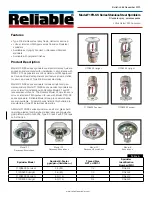
Using Folders
Each Messaging account has its own set of folders with five default Messaging folders:
●
Inbox
●
Outbox
●
Deleted Items
●
Drafts
●
Sent Items
The messages you receive and send through the account are stored in these folders. You can also
create additional folders within each account.
The way folders work vary by type:
●
If you use an Outlook e-mail account, e-mail messages in the Inbox folder in Outlook are
synchronized automatically with your device. You can select to synchronize additional folders by
designating them for synchronization. The folders you create and the messages you move will then
be mirrored on the e-mail server. For example, if you move two messages from the Inbox folder to
a folder named Family, and you have designated Family for synchronization, the server creates a
copy of the Family folder and copies the messages to that folder. You can then read the messages
while you are away from your PC.
●
If you use an MMS account or a text message account, messages are stored in the Inbox folder.
●
If you use a POP3 account and you move e-mail messages to a folder you created, the link is
broken between the messages on the device and their copies on the e-mail server. When you
connect, the e-mail server detects that the messages are missing from the Inbox folder on the
device and deletes them from the e-mail server. This prevents having duplicate copies of a
message, but it also means that you no longer have access to messages that you move to folders
created from anywhere except the device.
●
If you use an IMAP4 account, the folders you create and the e-mail messages you move are
mirrored on the e-mail server. Therefore, messages are available to you anytime you connect to
your e-mail server, whether it is from your device or PC. This synchronization of folders occurs
whenever you connect to your e-mail server, create new folders, or rename/delete folders when
connected. You can also set different download options for each folder.
ENWW
Using Folders
97
Summary of Contents for iPAQ
Page 1: ...Additional Product Information User Guide ...
Page 9: ...1 Registering the iPAQ ENWW 1 ...
Page 11: ...2 Phone ENWW 3 ...
Page 39: ...3 Connections ENWW 31 ...
Page 66: ...4 Global Positioning System GPS 58 Chapter 4 Global Positioning System GPS ENWW ...
Page 78: ...5 Security 70 Chapter 5 Security ENWW ...
Page 86: ...6 Camera select models only 78 Chapter 6 Camera select models only ENWW ...
Page 92: ...7 HP Photosmart Mobile 84 Chapter 7 HP Photosmart Mobile ENWW ...
Page 97: ...8 HP Photosmart Premier ENWW 89 ...
Page 100: ...9 HP Image Transfer 92 Chapter 9 HP Image Transfer ENWW ...
Page 103: ...10 Messaging ENWW 95 ...
Page 116: ...11 Java MIDlet Manager 108 Chapter 11 Java MIDlet Manager ENWW ...
Page 119: ...12 Learning The Basics ENWW 111 ...
Page 135: ...13 Calendar ENWW 127 ...
Page 141: ...14 Contacts ENWW 133 ...
Page 151: ...15 Entering Text ENWW 143 ...
Page 157: ...16 Notes ENWW 149 ...
Page 161: ...17 Expansion Cards ENWW 153 ...
Page 166: ...18 Synchronizing 158 Chapter 18 Synchronizing ENWW ...
Page 170: ...19 Tasks 162 Chapter 19 Tasks ENWW ...
Page 175: ...20 Product Specifications ENWW 167 ...
Page 181: ...21 Microsoft Programs ENWW 173 ...
Page 188: ...22 Regulatory Notices 180 Chapter 22 Regulatory Notices ENWW ...
Page 204: ......
















































